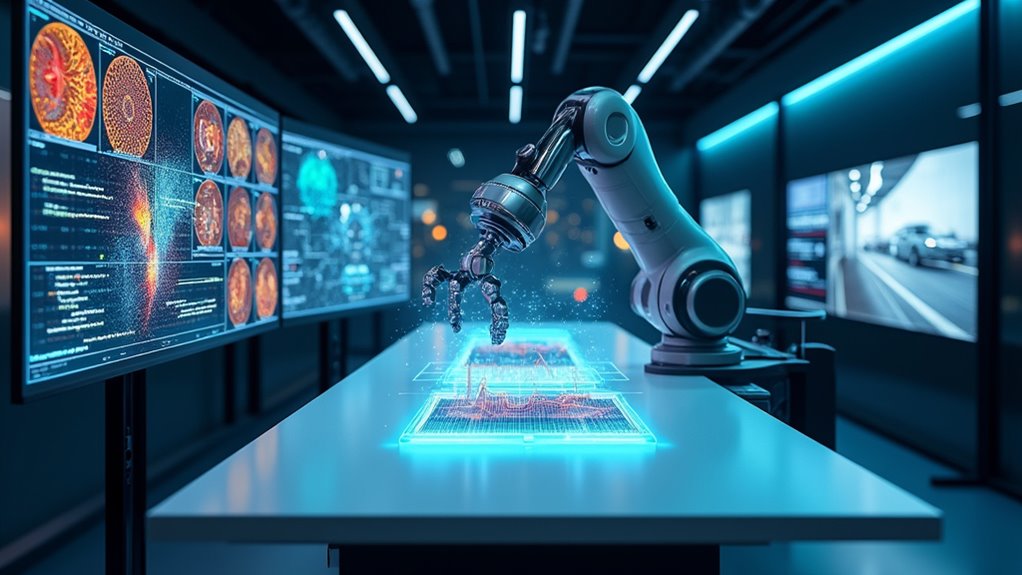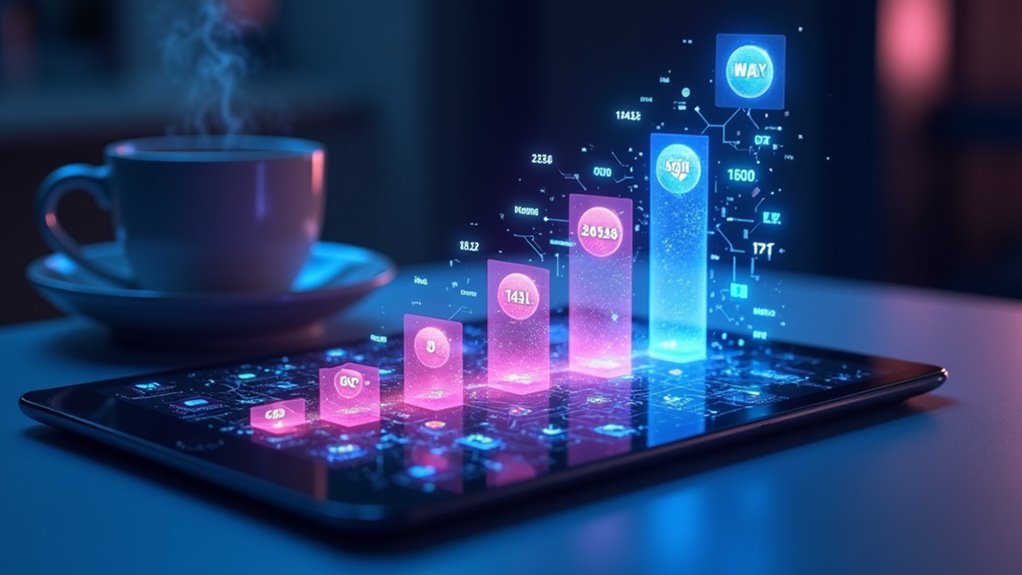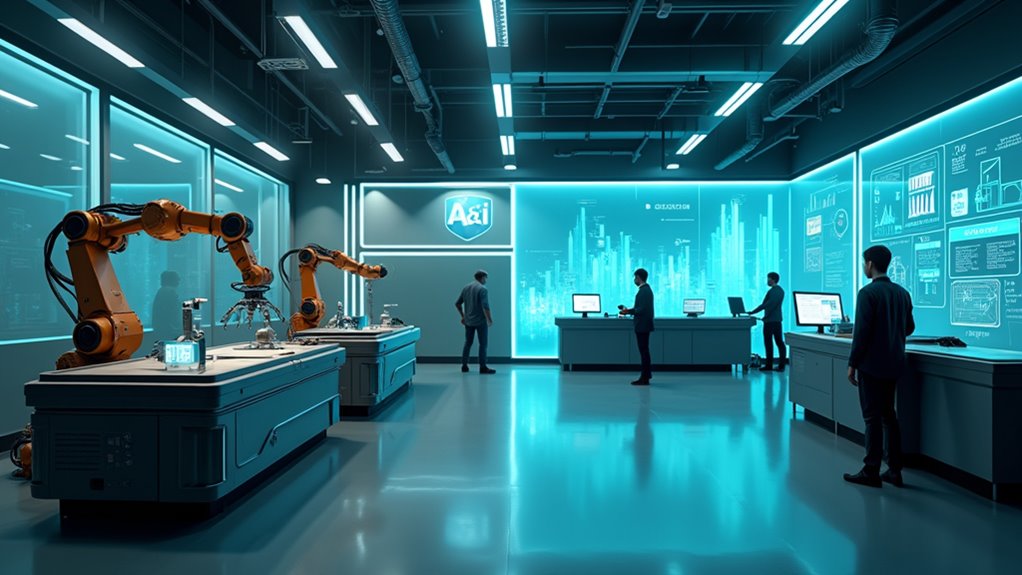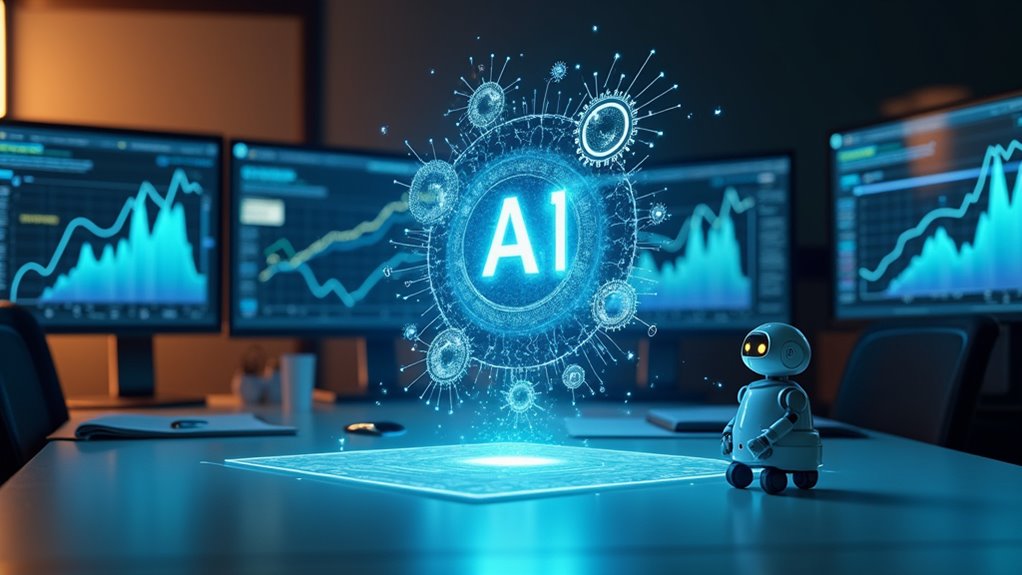Artificial intelligence transforms industries through machine learning, natural language processing, and computer vision. It’s revolutionizing healthcare with superior diagnostic accuracy and operational efficiency. Need customer service at 3 AM? AI chatbots handle complaints while you sleep. Businesses deploy AI for everything from inventory prediction to millisecond fraud detection. The trick? Balancing technological advancement with ethical frameworks to avoid bias. Explore these capabilities to discover how AI might already be influencing your daily life.

While many still picture robots from sci-fi movies when thinking about artificial intelligence, today’s AI capabilities extend far beyond these simplistic portrayals. Modern AI encompasses a range of sophisticated technologies that transform industries daily.
Machine learning allows systems to improve without explicit programming, while natural language processing helps your digital assistant understand when you’re asking for weather updates. Computer vision enables autonomous vehicles to “see” the road, and robotics automation handles repetitive tasks that would bore humans to tears. Don’t forget deep learning—it’s what helps Netflix know you’ll watch that documentary you didn’t even know existed.
AI’s true magic lies in learning without being taught, seeing without eyes, and knowing what you’ll love before you do.
These capabilities aren’t just theoretical achievements gathering dust in research labs. They’re reshaping industries right now. In healthcare applications, AI diagnoses diseases with accuracy that sometimes surpasses human doctors. Customer service chatbots resolve your complaints at 3 AM when human agents are fast asleep.
Supply chain managers use AI to predict inventory needs before products run out. Financial analytics tools detect fraud in milliseconds, and quality control systems spot manufacturing defects invisible to the human eye.
AI’s data interpretation abilities turn overwhelming information into actionable insights. Systems collect, process, and visualize complex datasets in real-time, identifying patterns humans might miss in years of analysis. This translates to better business decisions made faster than ever before. In healthcare specifically, AI-powered predictive analytics enable early disease detection that can dramatically improve patient outcomes. Companies that successfully implement AI create a domino effect of excellence throughout their entire business operations. The healthcare AI market, valued at $11 billion in 2021, demonstrates the massive financial investment behind these transformative technologies.
The future of AI promises even more transformative potential. As we edge closer to artificial general intelligence, systems may eventually handle any intellectual task a human can. Imagine healthcare diagnostics that consider your entire medical history in seconds, or business operations that optimize themselves automatically.
But this power demands responsibility. The push for ethical AI frameworks isn’t just good PR—it’s essential for responsible innovation. The most successful organizations won’t just adopt AI; they’ll implement it thoughtfully, with human needs at the center of technological advancement.
Frequently Asked Questions
Will AI Replace Human Jobs Completely?
Complete AI job displacement remains unlikely.
While automation will transform many roles, human qualities like creativity, empathy, and complex problem-solving remain difficult to replicate.
The future workforce adaptation will involve humans collaborating with AI rather than being wholly replaced.
Sure, routine tasks will be automated—that’s happening already.
But complete replacement? Not quite.
Instead, expect a shift where workers must develop new skills that complement, rather than compete with, AI capabilities.
How Do AI Ethics Committees Make Decisions?
AI ethics committees follow established ethical frameworks to guide their decision making processes. They typically assess proposals through a multi-step approach: identifying potential issues, creating ethical profiles, conducting thorough reviews for high-risk projects, and recommending mitigation strategies.
These committees balance diverse perspectives from ethicists, legal experts, and technologists to reach consensus. Their independence from business pressures helps guarantee impartial judgments, while their interdisciplinary composition enables thorough ethical evaluations of AI applications before deployment.
What Security Measures Protect Against AI Systems Being Hacked?
Organizations protect AI systems from hacking through layered defenses.
Robust encryption protocols secure data both at rest and in transit, while intrusion detection systems constantly monitor for suspicious activity.
Access controls with multi-factor authentication prevent unauthorized users from reaching sensitive systems.
Regular security audits identify vulnerabilities before attackers can exploit them.
The most effective protection combines technical measures with human oversight—because let’s face it, even the smartest AI can’t secure itself when hackers come knocking.
How Much Energy Do Large AI Models Consume?
Large AI models are energy-hungry beasts. Training GPT-3 consumed roughly the same electricity as 120 American homes use annually—and newer models gobble up even more.
This massive energy consumption stems from complex computations requiring powerful hardware running 24/7. While model efficiency improvements are helping, the trend is concerning.
The AI industry faces a vital challenge: balancing impressive capabilities with environmental responsibility. Without intervention, AI’s power demands could rival Bitcoin’s by 2027.
Are There International Laws Governing AI Development?
Yes, there are emerging international AI regulations, though no single extensive global framework exists yet.
The Council of Europe’s Framework Convention represents the first binding treaty, while the EU AI Act sets regional standards.
Global governance efforts focus on ethical considerations including transparency and fairness.
Countries like China have stricter compliance frameworks, while the U.S. relies mostly on voluntary guidelines.
Think of it as a regulatory patchwork—everyone agrees AI needs rules, but can’t quite agree on which ones!









